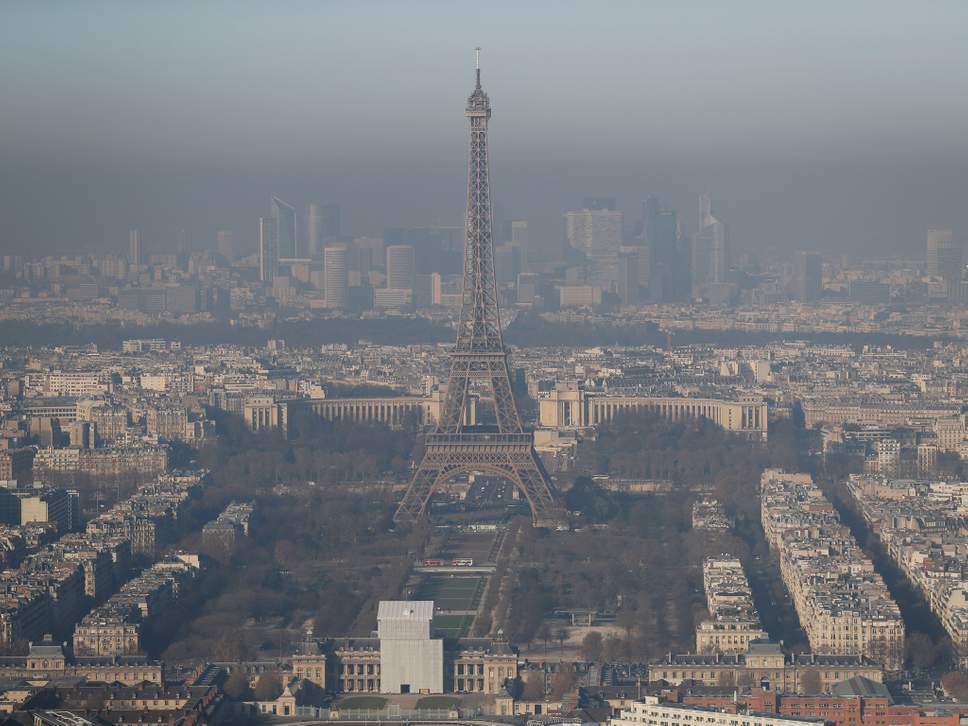Air Pollution in France
20 Aug 2018Air pollution is causing 48000 French deaths per year. Over 47 million French people are exposed to a level of air pollution particles that are considered to be unsafe by the WHO.

Speaking of the most polluted place in all of France, Marseille won the top as o survey carried out in 2016, followed by Lyon and Paris. Paris has fought against the air pollution for a decade. The city officials have implemented a series of counteraction to address the issue. To combat high levels of smog and the authorities have introduced fines for any vehicle not carrying a “Crit’Air” emissions category sticker. This is a part of a scheme to promote lower-emitting vehicles and combat high levels of smog.
PM2.5 and the smog
Smog is caused by the concentration of particulate matter. PM2.5 (Particulate matter 2.5) refers to tiny particles in the air that are 2.5 microns or less in width. Their sizes are about thirty times smaller than that of a human hair.
PM2.5 and its regulation
The United States Environmental Protection Agency (EPA) established National Ambient Air Quality Standards for PM2.5 in 1997 and revised them in 2006 and 2012. National Ambient Air Standards are established to be protective of public health. The short-term standard (24-hour or daily average) is 35 micrograms per cubic meter of air (µg/m3) and the long-term standard (annual average) is 12 µg/m3. A microgram is a unit of weight. There are a million micrograms in a gram, and a pound is equal to about 450 grams.
| Country | Name | PM10 | PM2.5 |
|---|---|---|---|
| Australia | Yearly Average | None | 8 µg/m3 |
| Australia | Daily Average | 50 µg/m3 | 25 µg/m3 |
| China | Yearly Average | 70 µg/m3 | 35 µg/m3 |
| China | Daily Average | 150 µg/m3 | 75 µg/m3 |
| United States | Yearly Average | None | 12 µg/m3 |
| United States | Daily Average | 12 µg/m3 | 35 µg/m3 |
PM2.5 and Respiration Google Trend
Particles in the PM2.5 size range are able to travel deeply into the respiratory tract, reaching the lungs. Exposure to fine particles can cause short-term health effects such as eye, nose, throat and lung irritation, coughing, sneezing, runny nose and shortness of breath. Exposure to fine particles can also affect lung function and worsen medical conditions such as asthma and heart disease. Scientific studies have linked increases in daily PM2.5 exposure with increased respiratory and cardiovascular hospital admissions, emergency department visits and deaths. Studies also suggest that long term exposure to fine particulate matter may be associated with increased rates of chronic bronchitis, reduced lung function and increased mortality from lung cancer and heart disease. People with breathing and heart problems, children and the elderly may be particularly sensitive to PM2.5.
Where does PM2.5 come from?
There are outdoor and indoor sources of fine particles. Outside, fine particles primarily come from car, truck, bus and off-road vehicle (e.g., construction equipment, snowmobile, locomotive) exhausts, other operations that involve the burning of fuels such as wood, heating oil or coal and natural sources such as forest and grass fires. Fine particles also form from the reaction of gases or droplets in the atmosphere from sources such as power plants. These chemical reactions can occur miles from the original source of the emissions. Some of the fine particles measured in the air are carried by wind from out-of-state sources. Because fine particles can be carried long distances from their source, events such as wildfires or volcanic eruptions can raise fine particle concentrations hundreds of miles from the event.
PM2.5 is also produced by common indoor activities. Some indoor sources of fine particles are tobacco smoke, cooking (e.g., frying, sautéing, and broiling), burning candles or oil lamps, and operating fireplaces and fuel-burning space heaters (e.g., kerosene heaters).